Table of Contents
Introduction
Garden therapy diy garden projects yummy recipes crafty goodness. is a way to explore garden projects, delicious recipes and natural beauty. Gardening is not only for kids but also for adults. One can get physical as well as mental benefits through gardening. However, Garden Therapy was mainly founded by Stephanie Rose to inspire people to go outside and experience nature. This article will explore the Goodness of garden therapy and scrutinize the need for a therapeutic garden, along with ways to start garden therapy DIY projects, yummy recipes, and crafty Goodness.
A garden is a great teacher because it teaches us patience, industry, caution and, above all, it teaches complete faith. Gardening is not done by simply standing back and marveling or sitting in the shade. It requires hard work.
Spending some time in the day gardening will bring many benefits even in busyness. In urban environments there is little opportunity to breathe clean air. If you have a garden near your house, that opportunity is somewhat better. Even if you don’t have a large space in a flat house, you can plant trees in the balcony by arranging water drainage. Gardening can also be done on the roof.
What Are Garden Therapy Diy Garden Projects Yummy Recipes Crafty Goodness?
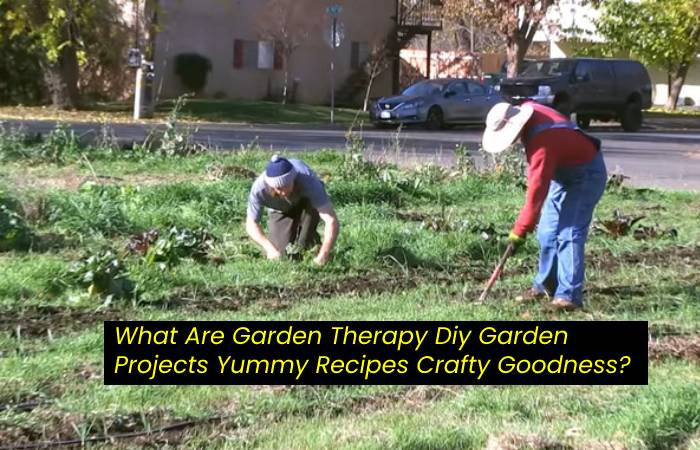
Garden therapy has been embraced as an effective therapeutic option and is widely used within various vocational and community settings.
Garden (nursery) therapy techniques help enthusiasts learn new skills and bring back those lost through trauma or disuse. It helps improve cognitive ability, language skills, socialization, memory, task initiation, and many others.
On a more physical level, garden therapy helps strengthen muscles and improve balance and coordination. About vocation, garden therapy teaches people how to solve problems, work independently and become more financially stable.
What Is A Therapeutic Garden?
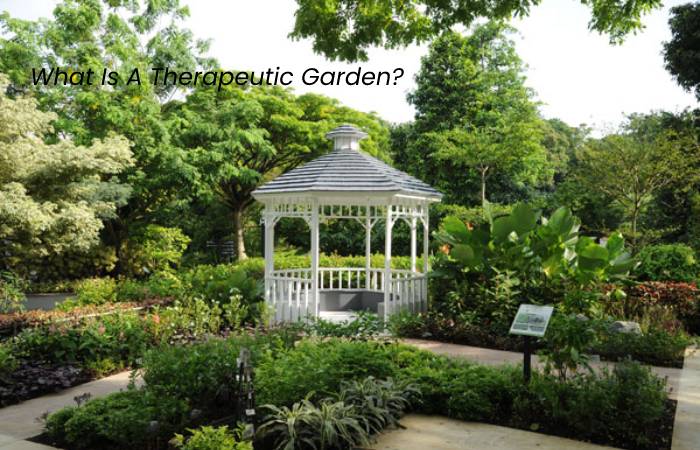
A therapeutic garden is an environment subject to plants designed to have people interact with nature’s soothing and healing power. The interaction could either be on a passive level or a functional level, depending on the user’s preferences.
What Are The Features That Make A Garden Therapeutic?
Some basic features that make a garden therapeutic could include something as simple as having wide and gently graded accessible paths and entrances. It also includes raised planting beds and containers, as well as a plant section that’s focused on texture, fragrance, and color in an attempt to appeal to the senses.
How To Get Started With Therapeutic Gardening
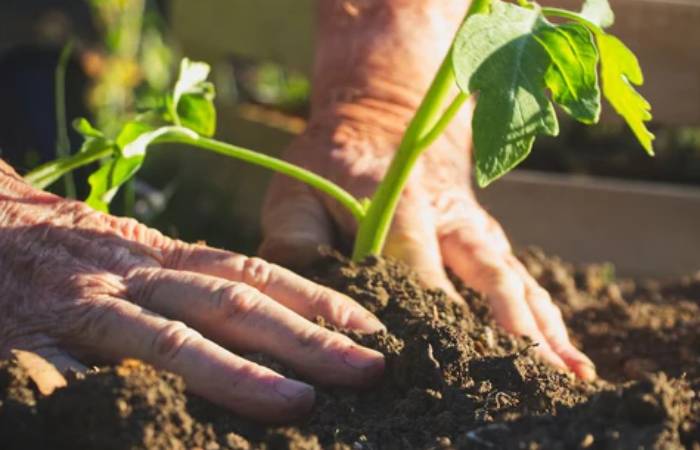
Garden therapy has been scientifically proven to improve mental health. A CNN report cited a study conducted in Norway that focused on the effects of therapeutic gardening on individuals diagnosed with depression, consistent low mood, or bipolar disorder. The study showed that half of the participants experienced a measurable improvement in their symptoms after gardening for just six hours per week for three months.
A 2010 study in a juvenile rehabilitation Centre in Ohio, published in 2011 in the Journal of Therapeutic Horticulture, showed that young offenders who participated in the gardening program were better equipped to cope and manage emotional and behavioral problems.
The Benefits of Therapeutic Gardening
Gardening is therapeutic for many people. It can be a great way to reduce, get out in nature, and enjoy the fresh air. It’s also an excellent way to relieve stress and anxiety. Gardening has been shown to improve mood, reduce depression, increase self-esteem, and help with social skills.
Garden lovers often say gardening is therapy, and that assessment might be more accurate than you think. Gardening improves physical health and goods nutritious homegrown goodies, but its calming benefits extend beyond that. From letup and stress relief to formal therapist-directed programs, mental and emotional well-being gets welcome boosts along the garden path.
The Best Plants for Therapeutic Gardening
Fragrant plants include rose, gardenia, lavender, rosemary, lilac, heliotrope, chocolate cosmos, lemon balm, lemon verbena, pine trees, and much more. “Rose geranium is a great sensory plant with soft, felt-like leaves that have a wonderful rose fragrance,” says Jan Lane.
How to Care for Your Therapeutic Garden
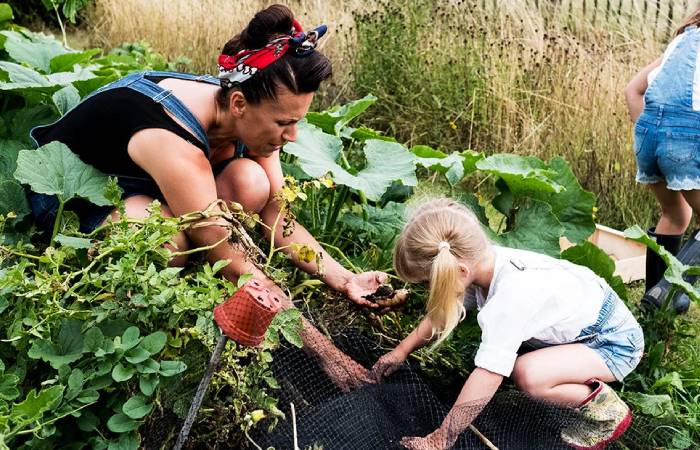
- Check the health of your plants. Whether you’re transplanting plants from nurseries or growing your own from seeds, thoroughly inspect your garden plants to ensure they are pest and rot-free. Bringing in infected or diseased plants can harm the whole garden. Aside from plant disease, destructive bugs like aphids, gnats, and whiteflies should be eliminated using the appropriate pesticides or other effective extermination methods.
- Water properly. Overwatering can lead to fungi growth, leaf spots, and unhealthy plants. Only water as often as necessary during the growing season for your specific plant species, and let the soil dry between waterings to keep from oversaturating. The trick is to keep your garden well-watered but not soaking and avoid wetting the foliage. Water directly onto the soil instead. When watering by hand, is easy to do, but if you want to automate things, opt for a drip irrigation system rather than sprinklers.
- Treat your soil. Soil degrades over time and needs to be refresh every so often. You can buy new ground from a local garden centre, so check the quality of your garden soil and replace it when necessary. Adding protection is also helpful for retaining the soil moisture of your garden. Protecting material will keep weeds down while also supplying organic matter to your soil when it begins to degrade. Fertilizing your garden is another method to keep it healthy. Depending on the type of plant species you’re growing, use the right amount of fertilizer and apply it appropriately to make sure you don’t overstress your plants.
- Clean your gardening tools. Garden tools should be cleaned to control disease and prevent transferring any bacteria or dangerous elements into your garden. In addition to the other garden care methods, clean tools can help keep your garden healthy longer.
- Perform plant maintenance. Deadhead, prune, and cull your plants as needed. Deadheading removes old flower blooms to encourage new growth. Pruning is cutting back the branches of your plants to control growth and make room for more. Culling your plants will clean up the unhealthy bits and create more space for your garden to flourish. These gardening methods can promote growth, clearing out any possible hidden pests or unwanted parts and increasing room for your flower or vegetable garden to grow.
- Destroy the weeds. Weeds are garden killers. They can suffocate the roots of your healthy plants, harbour pests, and become an unsightly nuisance. Weeds take up space and resources that your plants could use, so weeding your garden can keep it healthy and growing.
- Protect from animals. Set up a barrier around your garden bed, like a wire fence, to keep herbivores, critters, and other garden pests from destroying your plants. Wire fencing keeps your garden safe, while also keeping it visible and exposed to the sun (traditional fencing can sometimes block direct sunlight).
- Stake your plants. Staking involves fixing sticks into the ground and tying your flower stems or other garden crops to them with cloth or thread (you can also use a trellis). Staking your plants—like cucumber, pepper, or tomato plants—reinforces the stems and keeps them from bending or breaking, keeping them upright and healthy.
- Companion plant. Companion planting, or intercropping, is when you plant a variety of different crops together to increase growth productivity, provide pollinators, ward off pests, and control the habitat for beneficial insects.
- Try raised beds. Adding raised beds to your garden plans can significantly increase your plant’s longevity. Raised beds are great if you want to start small or plant a variety of sections. Raised beds come with a barrier, provide proper drainage, and help keep your garden bed safe from pathway weeds and other menaces.
DIY Garden Projects That Will Make Your Home Look Amazing
DIY Garden Decoration can save you money and earn you a lot of compliments when starting a garden. And Here are some excellent ways to make the garden of your dreams.
DIY garden decoration for your home garden can enliven your indoor space and help you find peace in this hustling world. Having a garden in your home is a great idea. It brings nature indoors, and allows you to breathe freely, relax and escape the concrete walls. A home garden is good for your mental health. It reduces stress and taking care of the garden will be a wonderful hobby to keep you focused. Let us read some easy DIY garden decoration ideas. You can let your creativity flow by using things you considered ‘trash’ and amp up this space instantly.
What is Your Best DIY Project?
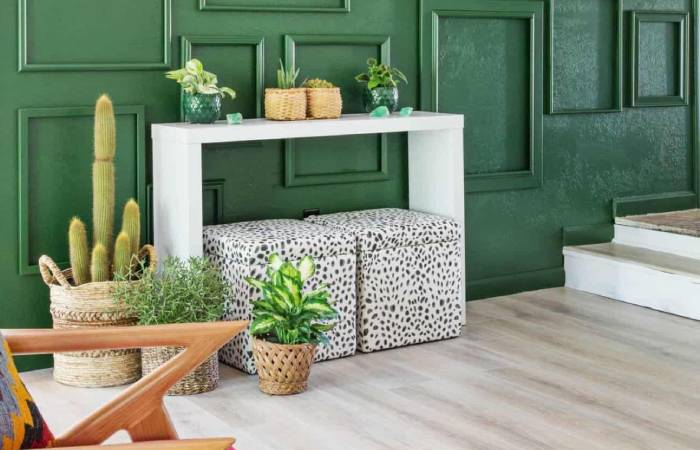
The top DIY project in the U.S. since March 2020 was painting, according to the survey. It was follow by replacing faucets and shower heads, shelving, building storage organization and installing curtains.
DIY at home can also provide creative ways to express yourself.
- Wallpaper a Wall.
- Make Compost.
- Tile a Backsplash.
- Install Vinyl Flooring.
- Build a Raised Garden Bed.
- Paint the Front Door.
- Hang Plants From the Ceiling.
- Reupholster Secondhand Furniture.
Conclusion
Garden therapy diy garden projects yummy recipes crafty goodness. A therapeutic garden can be easily create at home.The garden should be under the open sky. You can do many Garden Therapy Diy Garden Projects and Yummy Recipes. Crafty Goodness looks beautiful and healthy. You can also plant small and attractive flowers inside your home. For example, snake plants are ideal for indoor gardens as they provide oxygen. You can also paint your walls colorfully and artistically to make the interior more enticing. AUsing these ideas, you can create a great environment to perform yoga and other fitness activities.
Also Read: Stylish Basket Bags To Refresh Your Spring Wardrobe
